The Striso board is a very expressive music instrument which combines multidimensionally sensitive keys with an innovative note layout that helps understand the structures in music. The keys capture each subtle finger movement, which allows for levels of musical expression previously only known to acoustic instruments. Additionally, accents and sound effects can be added by shaking and moving the instrument as a whole.
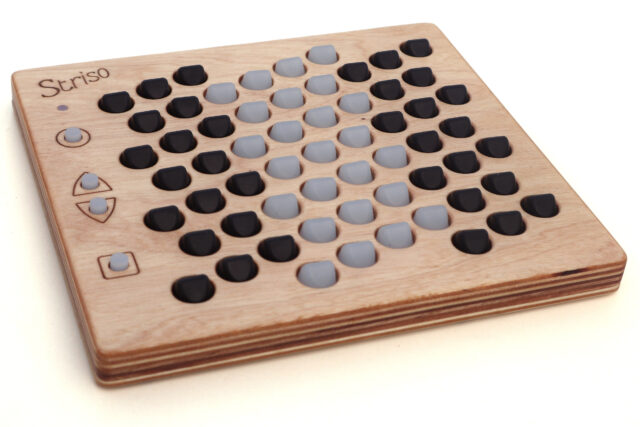
The sensitivity of the Striso board allows for an impressive variety of sounds, even from a single key. The tone responds to finger pressure, and subtle left-right and back-forth movement as variations in loudness, pitch and timbre. The keys of the Striso are carefully designed and have a unique feel. The horizontal ridge helps you keep orientation to play in tune, while their flexibility gives you exactly the right amount of haptic feedback.

The Striso note layout is designed to give insight in musical patterns, helps understand music theory and invites exploration and improvisation.
Firstly, the layout is isomorphic – a property shared with many alternative note layouts – which means that every musical interval, chord and scale has the same shape regardless of the key. No need anymore to learn and remember different chords for different root notes, once you know one major chord, you know all major chords. Instead spend your time playing, trying modulations, or exploring new chords.
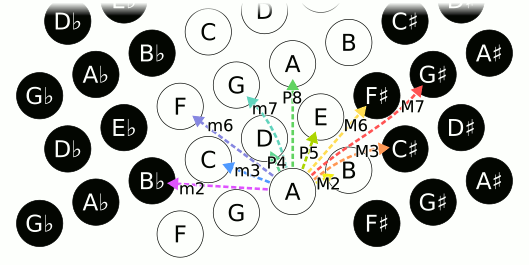
All intervals have their own shape, independent of the root note. Note that all minor (m) intervals are to the left and all major (M) intervals are to the right, with perfect (P) intervals in the middle.
Secondly, notes that are close to each other are always in the same key, so your music will easily sound harmonious, unless you reach out for more dissonant notes. This holds for both diatonic and pentatonic scales, and makes improvisation a lot easier and more free.
Thirdly, the axes of the note layout are very well defined, with pitch on one axis, and the progression of fifths on the other. From a root note, major intervals are always to the right, minor intervals to the left. Higher notes are up, lower notes down. This makes it easy to navigate melodic and harmonic structures.
The final interesting property is that the layout is tuning invariant. Because sharp and flat notes are separated it is possible to tune them differently and play for example in meantone tunings without having a wolf interval. The Striso board can easily switch between the common 12-tet and a range of alternative tunings.
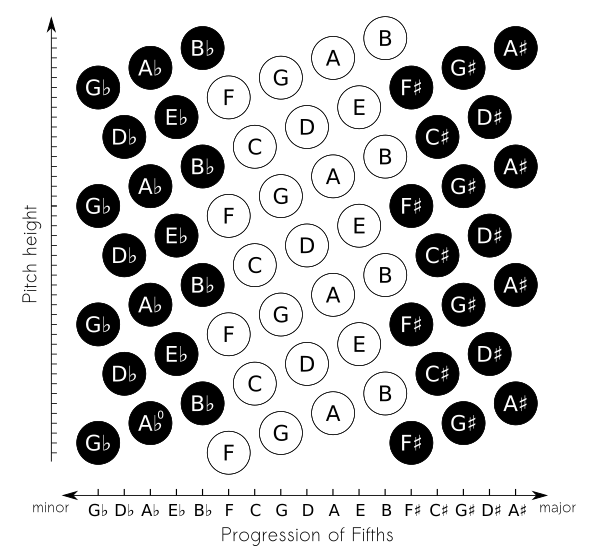
The Striso board is very compact. Its 61 keys, covering 3.6 octave, take the same space as 1 octave on a piano. Because there is some space between the Striso board keys, fingers have enough space even though the keys are closer together.
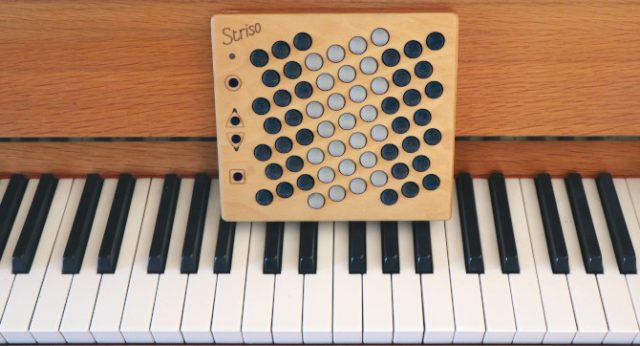
Specifications
- Isomorphic note layout (closely related to the Wicki-Hayden layout). download reference pdf
- 61 soft silicone pressure and direction sensitive keys (3.6 octave range)
- Scanning rate: 1200Hz
- Touch sensitivity range: 30g – 700g
- 4 extra buttons for glissando, octave switching and settings
- Motion sensing: 3D rotation and acceleration, sent over MIDI at 100Hz
- Polyphony: 15 notes (MPE limitation)
- Tunings: 12tet, 31tet, 19tet, 5tet, 7tet, 1/4 meantone, pythagorean, 7-limit JI, Indian Shruti, Bohlen-Pierce and user defined. Deviations from 12tet are sent over MIDI using polyphonic pitch bends and hence work with any MPE enabled synth.
- Audio output: 3.5mm stereo jack (for headphones or line out)
- MIDI over USB, with multiple MIDI modes:
- MPE, one note per channel
- normal, with pitch bend, modulation and polyphonic aftertouch
- monophonic, with glissando
- MIDI out via TRS mini-jack (Type A)
- Sustain/expression pedal input (shared with MIDI TRS mini-jack)
- Dimensions: 192x174x26mm, 425g
- Power: USB, 5V 150mA
- Firmware: Open Source firmware
A reference of the note layout for printing is available for download.
For availability check the web shop.
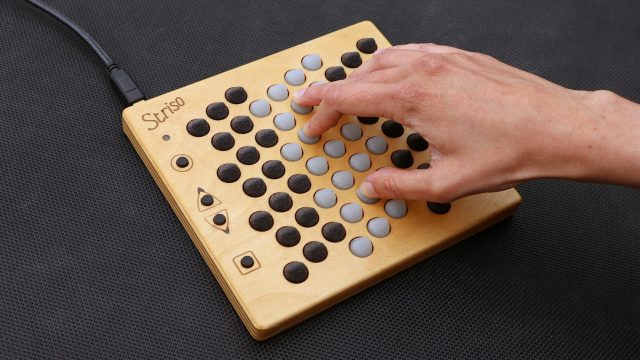
Some articles about the Striso board:
Musicradar “With its wooden casing, the Striso Board MIDI controller borrows the look of a traditional instrument, and thanks to its multidimensionally sensitive buttons, it’s designed to play like one, too.”
Routenote “Imagine ROLI keyboards had a baby with an Ableton Push controller and they had a baby that looked like a board game – That’s Striso.”